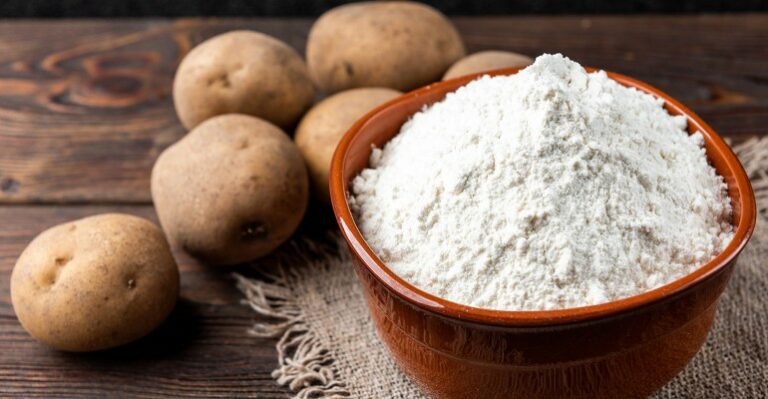Project Report For Starch Manufacturing
Introduction
Project report for Starch Manufacturing is as follows.
All green plants generate starch, a white, granular organic substance. Starch is a powder that is white, odourless, and insoluble in cold water, alcohol, or other solvents.
The starch molecule’s fundamental chemical formula is ( (C6H10O5)n) Starch is a polysaccharide composed of 1,4-linked glucose monomers. The simplest type of starch is the linear polymer amylose; the branched form is amylopectin.
Project Report Sample On
Starch Manufacturing
Get Completely Custom Bankable Project Report
Starch is formed in plants’ green leaves from surplus glucose produced during photosynthesis and acts as a reserve food source for the plant. Starch is stored as granules in chloroplasts and in organs such as the roots of cassava, the tuber of potato, the stem pith of sago, and the seeds of maize, wheat, and rice.
When necessary, starch is broken down into its monomer glucose units in the presence of certain enzymes and water, which diffuse out of the cell to feed the plant tissues. Starch from plants is broken down into its component sugar molecules in humans and other animals, which subsequently provide energy to the tissues.

In the United States, the starch market is expected to reach 33.4 million metric tonnes in 2021. Currently, the country holds a 27% share of the global market. China, the world’s second-largest economy, is expected to reach a market size of 33.1 million metric tonnes in 2026, growing at an 8.1 percent compound annual growth rate over the analysis period.
Japan and Canada are two other noteworthy geographic markets, with forecasted growth rates of 2.8 percent and 4%, respectively, over the analysis period. Germany is expected to grow at a CAGR of approximately 3.6 percent within Europe, while the rest of the European market (as defined in the study) is expected to reach 35.7 Million Metric Tons by the end of the analysis period. In Asia-Pacific countries, demand for starch comes from both the non-food and food sectors.
Strong economic growth, expanding employment opportunities, and rising per capita disposable incomes, particularly in China and India, all contribute to the robust growth in demand for food and non-food ingredients such as starch.
China, India, Russia, Brazil, and Africa are also promoting the use of starch, particularly in paper mills, packaging, and certain food applications. In North America, demand for starch types such as corn starch is primarily driven by the food and beverage industry’s growing use of gluten-free ingredients, owing to the country’s rising prevalence of gluten intolerance and celiac disease.
Market Potential Of Starch Manufacturing
Expenses

Product Cost Breakup

Reveneue Vs Expenses

Market Trend

The increasing use of starch in food and beverage processing, as well as increased consumption in non-food industries, is driving the global market growth.
The food processing industry’s rapid growth and growing demand for starch-based adhesives in industrial products such as packaging are propelling the starch market forward. Starch demand continues to grow strongly in the food processing industry, owing to the fact that the majority of sugars used in various food processing activities are derived from starch.
Sweeteners, which are used in place of sugar, are experiencing rapid growth. This trend is more pronounced in China, where soft drink manufacturers and agrifood groups are expressing interest in isoglucose.
Consumer demand for convenient and healthy foods continues to drive the food industry’s use of modified starch. The growing use of starch in the production of biodegradable polymers has the potential to significantly alter market prospects.
The global market for starch, which was estimated at 119.6 million metric tonnes in 2020, is expected to reach 160.3 million metric tonnes by 2026, growing at a 5% compound annual growth rate over the analysis period.
One of the segments analysed in the report, liquid starch is expected to grow at a 5.2 percent compound annual growth rate (CAGR) to reach 97.6 Million Metric Tons by the end of the analysis period.
After a thorough analysis of the pandemic’s business implications and the resulting economic crisis, the Native Dry Starch segment’s growth is readjusted to a revised 5.2 percent compound annual growth rate over the next seven years. At the moment, this segment holds a 26.9 percent share of the global starch market.
Liquid starch products are starch derivatives in the form of syrup that are primarily used as sugar substitutes. Among these starch-based products are ethanol, isoglucose, and other syrups.
